Mandy Hiltz
Advisor: Herb Enns
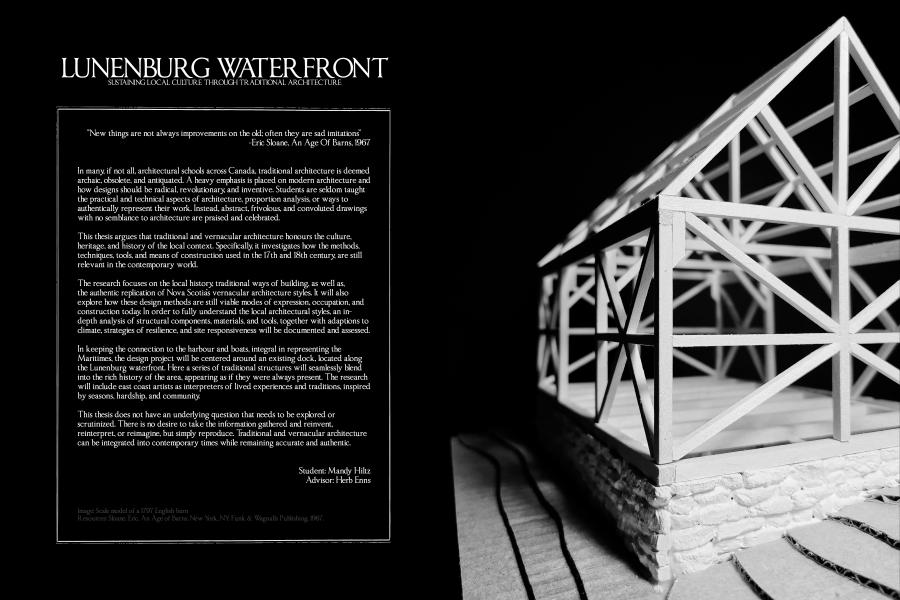
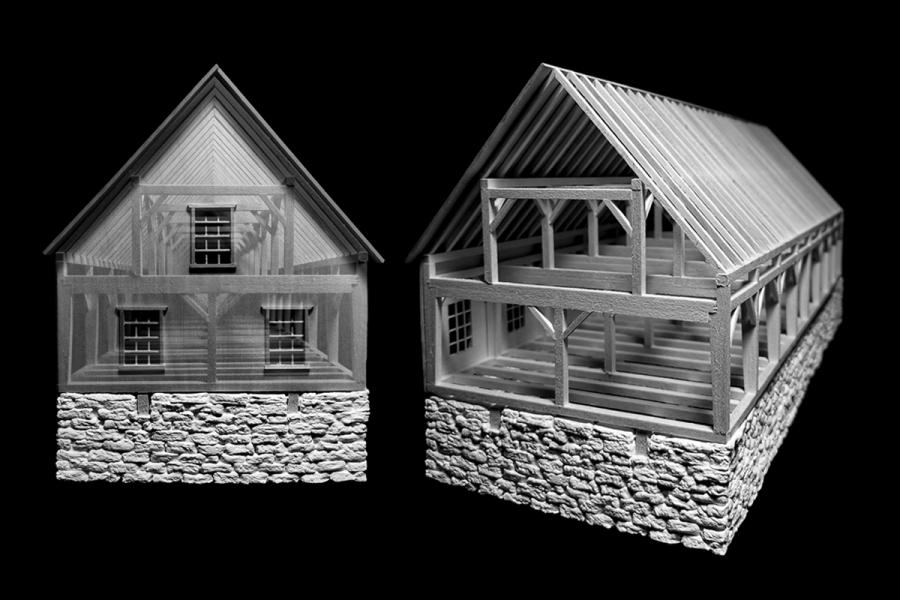
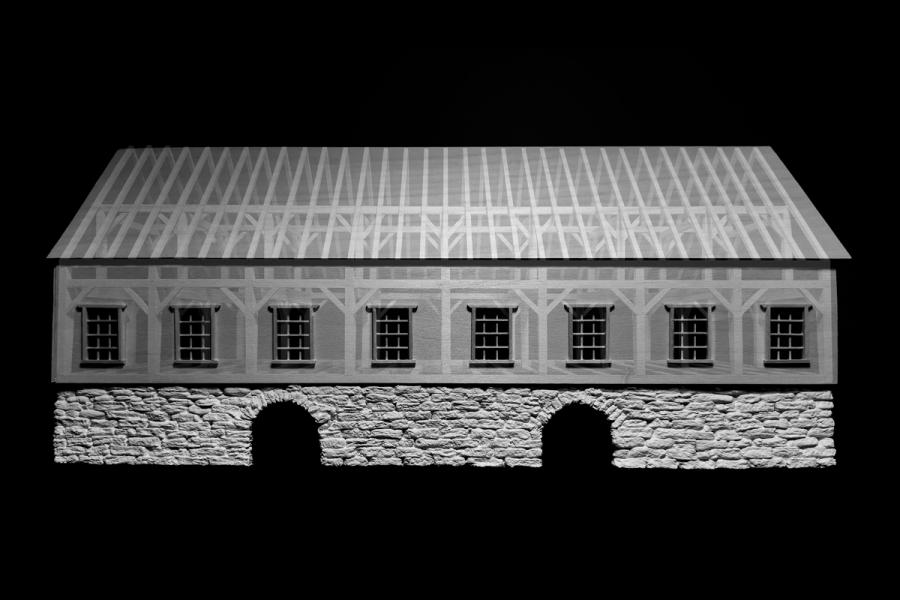
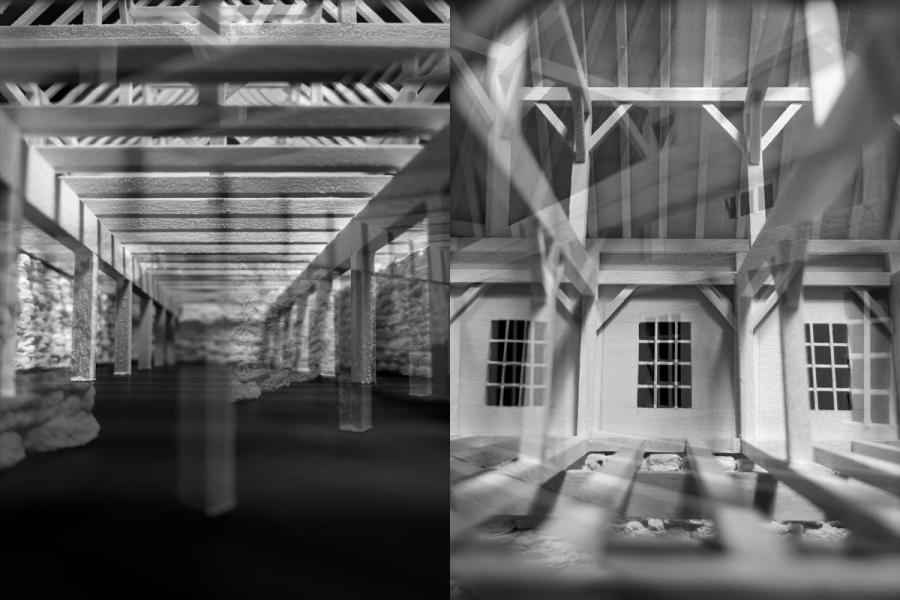
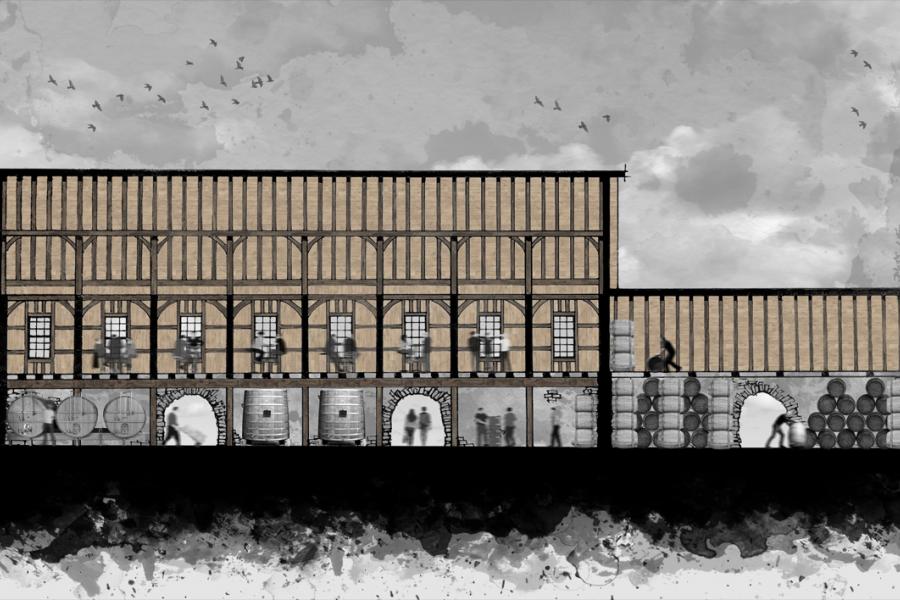
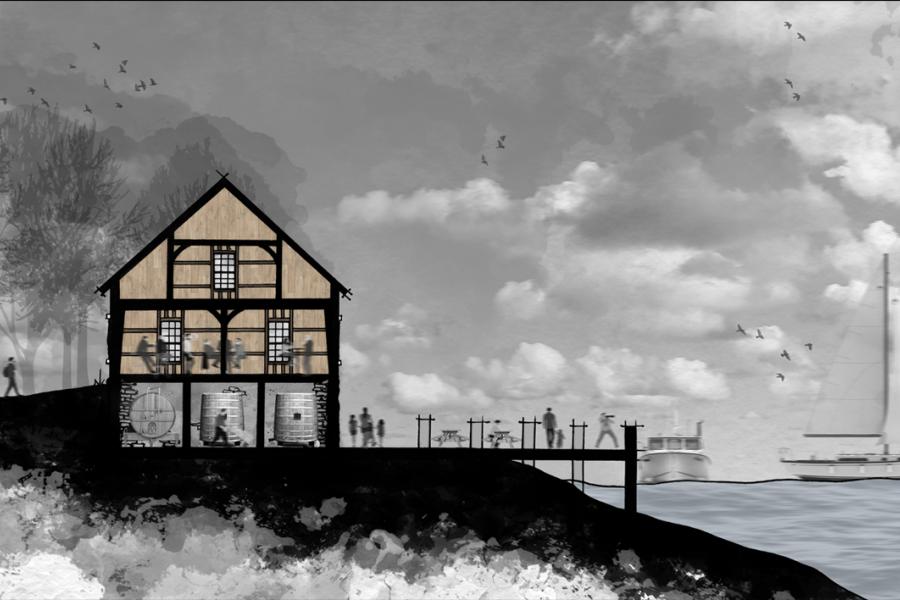
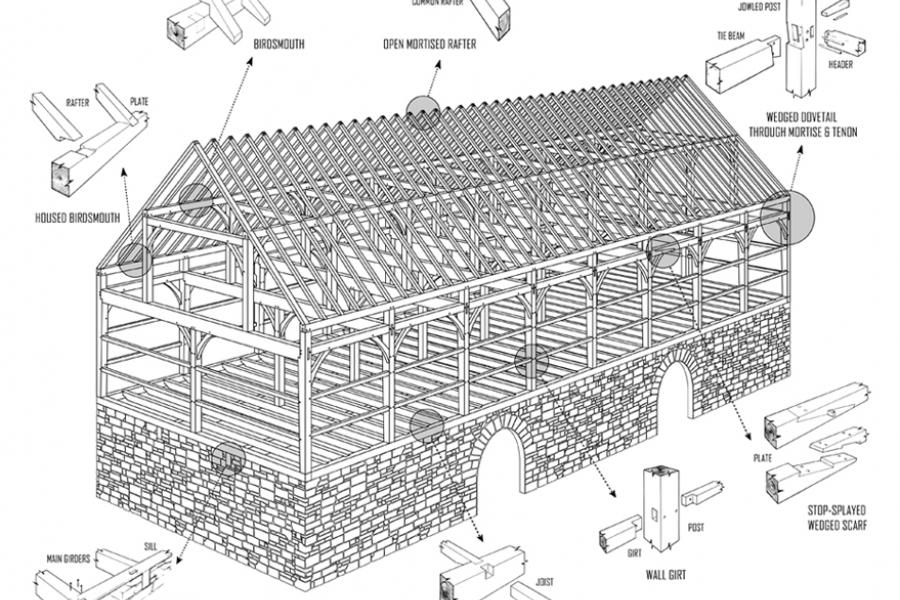
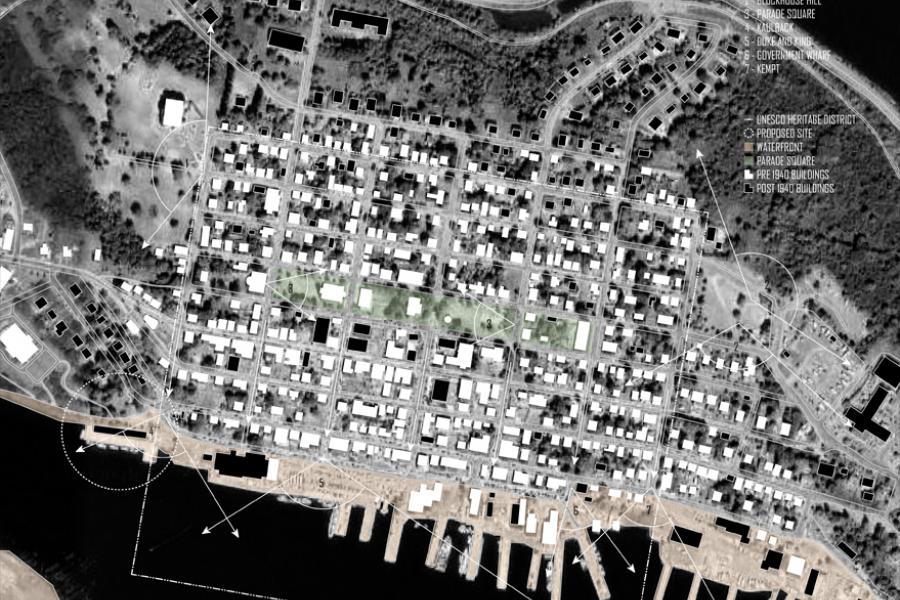
Lunenburg Waterfront: Sustaining Local Culture Through Traditional Architecture
In many, if not all, architectural schools across Canada, traditional architecture is deemed archaic, obsolete, and antiquated. A heavy emphasis is placed on modern architecture and how designs should be radical, revolutionary, and inventive. Students are seldom taught the practical and technical aspects of architecture, instead, abstract, frivolous, and convoluted designs with no semblance to architecture are praised and celebrated.
The main focus of this thesis is about honoring the culture, heritage, and local history of Nova Scotia through traditional and vernacular architecture. Specifically, how the methods, techniques, tools, and means of construction used in the 17th, 18th, and 19th century, are still viable modes of expression, occupation, and construction today. In order to fully understand the local architectural forms, an in-depth analysis of structural components, materials, and tools, together with adaptations to climate, strategies of resilience, and site responsiveness will be documented and assessed.
In keeping the connection to the harbour and boats, integral in representing the Maritimes, the design project will be centered around an existing wharf, located along the Lunenburg waterfront. The location is in close proximity to the major attractions while remaining autonomous, creating a community within a community ambiance. Here a series of traditional structures will seamlessly blend into the rich history of the area, appearing as if they were always present.
The research will focus on the local history, traditional ways of building, as well as, the authentic replication of Nova Scotia’s vernacular architectural forms. It will also include east coast artists as interpreters of lived experience and traditions, inspired by the seasons, hardship, and community.
This thesis does not have an underlying question that needs to be explored or scrutinized. There is no desire to take the information gathered and reinvent, reinterpret, or reimagine, but simply reproduce. Through replication, preservation, rehabilitation, and restoration, traditional and vernacular architecture can be integrated into contemporary times while remaining accurate and authentic.
